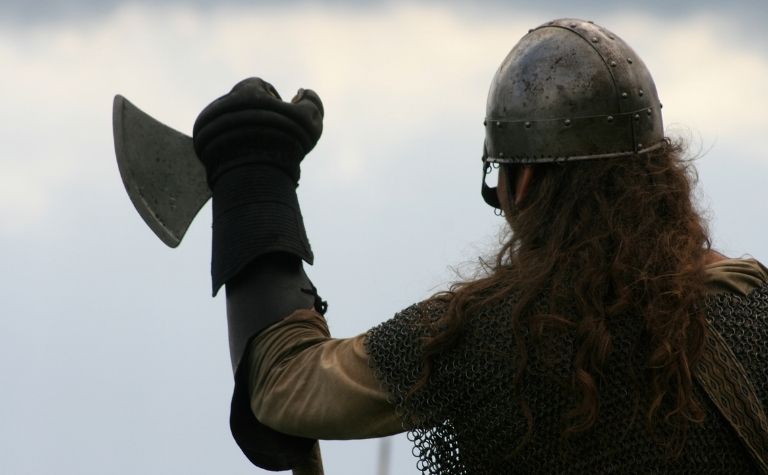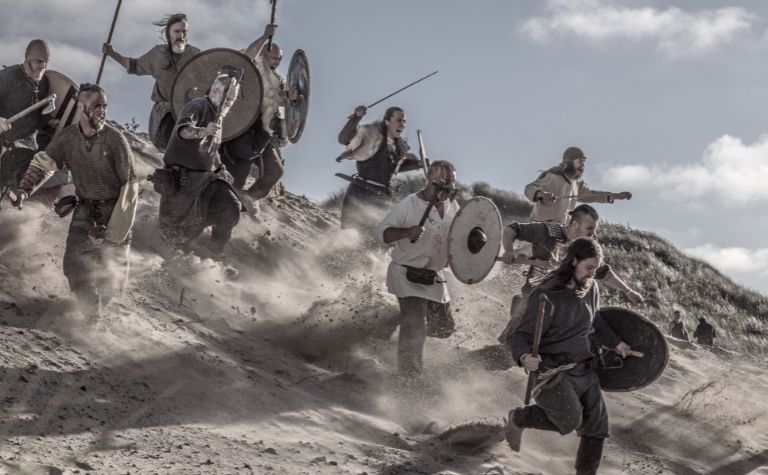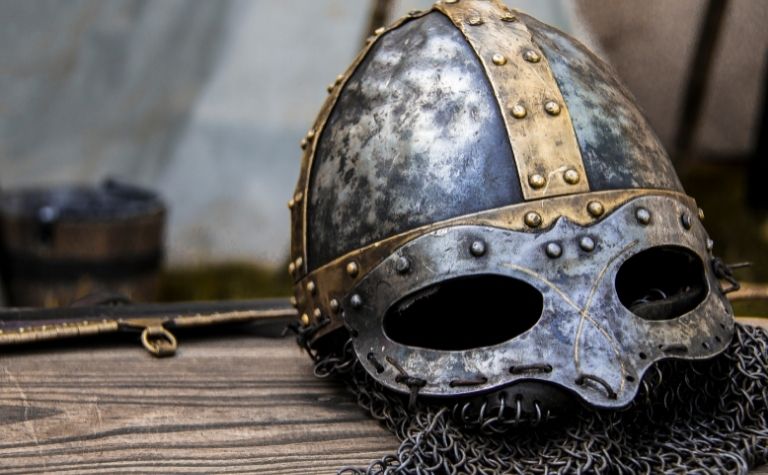The Vikings were Germanic people who lived primarily in the Scandinavian countries during the Viking Age (793 AD to 1066 AD).
However, when scholars discuss Vikings and Germanic barbarians, they’re speaking of two distinct groups.
While the Vikings were Germanic, they weren’t the Germanic barbarians referred to in history books and podcasts.
The German barbarians consisted of various tribes of nomadic people who lived during the Iron Age and contributed to the fall of Rome.
Vikings lived centuries later during the Viking Age and were explorers and seafarers. They were also not nomadic.
This article will discuss who the Vikings were and where they came from. It will also outline which groups of people were considered Germanic barbarians and whether or not Vikings have a shared history with them.
Also see What Did the Vikings Look Like? to learn more.

Who Were the Vikings and Where Were They From?
The Vikings, or Norsemen, were seafaring raiders and explorers primarily from the Scandinavian countries of Sweden, Norway, and Denmark.
They lived during the Viking Age, were pagans, and were known for attacking and raiding countries and kingdoms both near and far away.
The Viking Age began in the late 8th century AD and continued until the 11th century AD.
During that time, Vikings built longships and sailed to Europe, Asia, North America, and Africa.
There, they attacked, raided, and murdered the countries’ inhabitants.
They also set up several settlements, primarily in Europe, to the dismay of the inhabitants of those lands. It’s important to note that the Vikings never called themselves Vikings. [1]
The word víkingr was used in the 12th and 14th centuries and was synonymous with the word pirate.
Were the Vikings Nomadic?
Contrary to what many people think, Vikings weren’t nomadic.
They traveled, explored, and raided areas as far away as Canada, Greenland, and Baghdad.
However, they weren’t constantly relocating as a way of life.
Instead, they set up settlements and were farmers by trade. Their communities had a social hierarchy that consisted of:
- Kings
- Jarls (earls)
- Chieftains
- Clan leaders
- Retainers
- Freeman
- Slaves [2]
Various clans and earldoms would join together to go on raiding expeditions. Scholars have many theories as to why the Vikings undertook these expeditions, including:
- Finding more women for the surplus of Viking men
- Using raiding as a means of population control in the overcrowded settlements
- Obtaining gold and riches to bring back with them
- Seeking new settlements with rich and fertile land for farming
- Gaining glory to impress their gods
Also see What Color Eyes Did Vikings Have? to learn more.
The Viking Religion
Today, the Viking religion is called Norse paganism or heathenry. [3]
The Vikings were polytheistic and believed in and worshiped many gods.
Odin, the All-father, was their supreme deity, but there were several other gods and goddesses, as well, including:
- Thor
- Loki
- Frey
- Freya
- Frigg
- Tyr
- Baldr
They believed that the world consisted of nine realms, all connected by a giant tree called Yggdrasil. Humans lived in Midgard, while the gods lived in Asgard.
The gods’ main rivals, the giants, lived in Jotunheim.
They regularly sacrificed to their gods, and they believed that dying honorably in battle was the only way to make it into Valhalla, their most coveted afterlife location.
Furthermore, they believed their destinies were set from the moment they were born.
These beliefs allowed them to fight with a ferocity that was unmatched by other Europeans at the time.
According to Britannica, it was this savagery and “their burning, plundering, and killing” that “earned them the name víkingr […] in the early Scandinavian languages.”
Also see Why Did the Vikings Invade Paris? to learn more.

What People Were Considered Germanic Barbarians?
Germanic barbarians consisted of various nomadic Iron Age tribes who played a role in the downfall of Rome.
They migrated to Western Europe and modern Great Britain centuries before the Vikings raided these same lands.
These tribes were the Visigoths, Ostrogoths, Saxons, Franks, and more.
Other Germanic barbarians included the:
- Vandals
- Danes
- Angles
- Marcomanni
- Lombards
- Burgundians
- Gepids
- Alans
- Alamanni [4]
These people lived from approximately the 10th century BC until the 7th century AD, with some tribes disappearing or merging with other tribes earlier than that.
They lived during the same time as the Celts, not the Vikings, though vestiges of these Germanic tribes still remained at the beginning of the Viking Age.
In fact, some scholars call the Vikings the “last of the barbarians.”
Most historians don’t like this designation, though, because it adds more confusion to the issue of whether or not the Germanic barbarians and Vikings were the same people.
These early Germanic tribes often clashed with the native Celts in the regions where they settled.
Some people may have also mixed or interbred with the Celts, though scholars can’t be sure.
Archaeological records from the time exist, but it’s difficult for historians to differentiate the Celts from members of Germanic tribes. [5]
Were the Germanic Barbarians Nomadic?
Germanic barbarians were nomadic. Though the various tribes shared a similar language and cultural beliefs, they were migratory and traveled far and wide.
Many Germanic tribes settled in Western Europe and modern Great Britain. Others went to Spain, Italy, North Africa, and Gaul.
Toward the end of the 5th century AD, some settlements, especially those in Western Europe and Great Britain, became permanent.
Many of the tribes merged and formed communities, towns, and kingdoms.
At that point in history, they began transitioning from Germanic barbarians into Anglo-Saxons, Jutes, and the other well-known people of early Europe.
They also began to form hierarchical social structures and develop strong militaries to defend their territories.
Politicians began to arise, and the bare bones of the European government started to form.
German Barbarians’ Religion
Like the Vikings, early Germanic barbarians were also polytheistic pagans. There are actually many similarities between early Germanic paganism and Norse paganism. [6]
However, starting in the early 5th century AD, the tribes began to convert to Christianity. By the end of the 6th century AD, the conversion was complete.
Also see Were All Vikings Bad or Evil? to learn more.

Do Vikings Have a Shared History with Any Barbarians?
Vikings have a shared history with the Germanic barbarians.
They lived at different times in Europe’s history, but the Vikings were Germanic people.
Some of the Northern Germanic tribes settled in Scandinavian countries. Therefore, it’s likely that some Vikings were their descendants.
However, it’s unlikely that all Vikings were descended from Germanic barbarians, as Viking designated a way of life rather than a race of people.
There were Vikings of other races outside white Europeans, and those may not have had the same Germanic heritage.
Conclusion
The primary difference between Vikings and Germanic barbarians was that the two groups lived in different periods. Additionally, Germanic barbarians were nomadic, while Vikings weren’t.
Also see Were Vikings Pirates? to learn more.
References:
[1] Source
[2] Source
[3] Source
[4] Source
[5] Source
[6] Source
